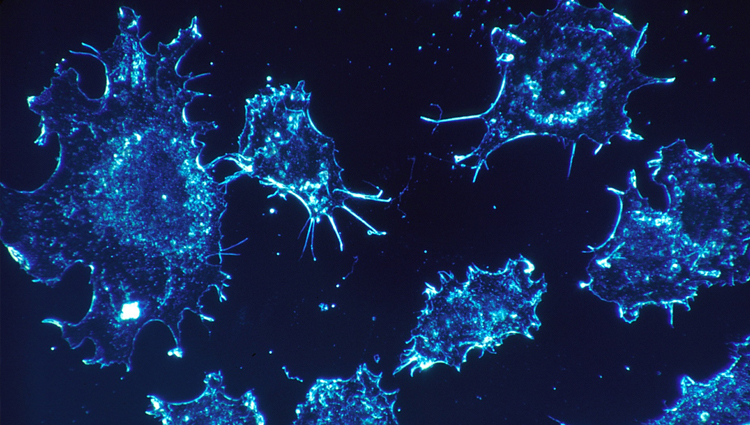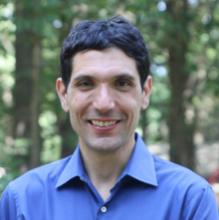Cancer is a Militant “Safe Mode” in Body’s Operating System, Physicists Suggest

(Inside Science) -- No one accuses physicists of ducking the big scientific questions, and one of the biggest is how cancer originated in living organisms. Understanding cancer’s origin story can provide new ideas on keeping it at bay, and physicists can search for general patterns and features in a phenomenon such as cancer to obtain fundamental insights into its nature.
No physicist is more suitable for this task than Paul Davies, a theorist at Arizona State University who has addressed many big topics such as how the universe seems to have ideal conditions for life on Earth. He and fellow physical scientist Charles Lineweaver at Australian National University have introduced a new theory of cancer that proposes it’s more of a primitive response to a body malfunction than an attack of genetic mutants.
For the past few years, Davies has been the director of ASU's Center for Convergence of Physical Science and Cancer Biology, one of 12 created in 2009 by the National Cancer Institute in an effort to tap knowledge from many disciplines to advance cancer research. At the time, Davies knew almost nothing about cancer and wanted to approach the topic from the basics as a scientist. “I began thinking about why cancer exists at all and what its place is in the grand story of life on Earth,” he writes in an article that appears in the July issue of Physics World.
Scientists have traditionally assumed that cancer arises from the buildup of genetic errors in an organism’s DNA, producing abnormal cells that form tumors. In this traditional view, the strongest tumor cells then survive and multiply as a result of natural selection. Both of these biological processes—genetic mutations and natural selection—have existed since the beginning of life on Earth.
In contrast, Davies and Lineweaver argue that cancer stems from a newer biological mechanism, emerging specifically in multicellular life. When a multicellular organism's complex cellular machinery malfunctions, they propose, it enters a sort of “safe mode,” producing cells that are reminiscent of those in simpler single-celled organisms, such as amoebas, which multiply themselves indefinitely. Davies compares the first stage of cancer to the malfunctioning of an operating system such as Windows, which can continue to function, albeit in a limited fashion, by launching into a more basic mode after a crash or virus.
Subsequently, tumor cells can spread to other parts of the body, and this "metastasis" leads to 90 percent of cancer deaths. At this point Davies and Lineweaver invoke a military analogy, comparing the tumor to a command-and-control center that sends carefully coordinated signals to the rest of the body and forms new colonies that can withstand the body's defense mechanisms. Rather than the random, rogue genetic mutants of traditional models, cancer cells in this new model are members of an ancient legion.
Strikingly, the theory proposes that cancer is a sort of “aging in reverse” for the body. Like the embryonic stem cells that can develop into any body organ, the more primitive tumor cells are like embryonic cells, produced when a mature organ's cells fail to carry out its more complex orchestrations.
As with most new models, this new theory leaves unanswered many questions and details. While it explains how cancer can be so robust in the body, it raises the puzzling question of why most complex organisms’ operating systems haven’t upgraded themselves in hundreds of millions of years to avoid the often deadly response of cancer. And there are other interesting alternative models of cancer, including one that finds parallels between tumors and Amazonian ecosystems, and another that suggests cancers are actually newly evolved species.
Still, models like these promise to, at the very least, stimulate new ideas on grappling with cancer. In his newly introduced picture, Davies does not foresee cancer as a disease that can be cured, but rather as a process that can be kept dormant or slowed, similar to the hope for Alzheimer’s and aging. “Like aging,” Davies writes, “cancer seems to be a deeply embedded part of the life process.”

